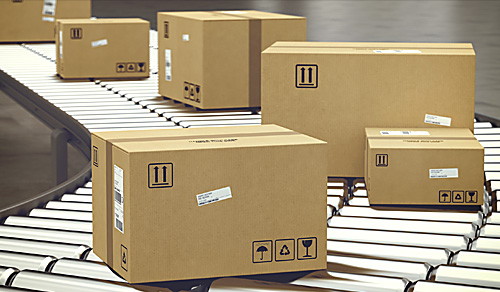
How Today's E-commerce Trends Affect Warehousing
Cooper Lighting Solutions - Even before COVID-19, the rise of e-commerce was causing a sea change in warehousing and logistics. Now that the pandemic has driven the popularity of e-commerce shopping to new heights, there's even more pressure for warehouses to not only adapt, but future-proof operations to remain agile and competitive (even when the next crisis occurs). Here are the trends that should be on all facility managers' minds.
Convenience is competition.
With online goods becoming commoditized and undifferentiated in price from one retailer to the next, customer experience has become the battleground where companies compete. And consumers expect almost instant gratification. Free two-day shipping is the gold standard, and 79% of consumers in a 2019 study said it was important to them.
Once almost entirely behind-the-scenes, logistics and warehousing operations have become a central part of the customer experience. Warehouses have become more distributed to get closer to customers' homes and expedite shipping times. With warehouse real estate becoming even more scarce amid the pandemic, many companies turned to renovating non-warehouse facilities or using consolidation hubs to facilitate last-mile delivery.
Consumer buying patterns are increasingly unpredictable.
Gone are the days when consumer demand followed predictable, seasonal patterns, spiking during the holidays. In 2020, rapidly shifting consumer spending habits took the supply chain for a wild ride. The bottlenecks and bare shelves that plagued retailers (and irritated consumers) underscored the need for a more agile, less linear supply chain.
More sophisticated, accurate analytics lie at the heart of that goal. The most critical considerations for warehouses? Stock visibility and the flow of data across the supply network.
Returns continue to pose a challenge.
While consumers return 5-10% of in-store purchases, the number jumps to 15-40% for e-commerce. Returns have long presented a challenge for retailers, increasingly expected to offer a hassle-free policy to compete for customers.
More returns mean more warehouse space is needed; if the upward trend continues, the U.S. will need to add 400 million square feet of warehouse space in the next five years just to process returns.
Operations have become more labor-intensive.
As warehouses increasingly handle direct-to-consumer delivery, workers must handle a much larger number of smaller parcels. They also need more workers to manage returns, a task that previously belonged to the retailer.
Automation is the end goal for many businesses. Meanwhile, many are rethinking their warehouses' environments, ergonomics, safety, and security as they compete for workers in a tight labor market. Real-time location systems (RTLS) are increasingly popular ways to monitor the flow of people and equipment in warehouses, boost COVID safety, and improve security.
Decision-makers are ready to invest in the bigger picture.
If the pandemic taught us anything in terms of logistics and the supply chain, it's that "business as usual" is no way to do business now. To survive, companies need to make more intelligent decisions, be ready to pivot operations on a dime, and have a plan for minimizing the impact of interruptions and bottlenecks. That's where data comes in.
While incorporating "smart" technology and Internet of Things (IoT) capabilities was once viewed as aspirational or unrealistic, connected solutions are quickly becoming table stakes. And, adopting technology like RTLS can be less expensive than many realize. Simply upgrading an outdated, inefficient lighting system to LED lighting with built-in "smart" technology provides a foundation for countless data-driven improvements and integrations. And, in large spaces like warehouses, these upgrades quickly pay for themselves in energy savings alone.
Learn more about the Cooper Lighting Solutions Industrial portfolio:
cooperlighting.com/global/indoor/industrial
Sources
- "The Shed of the Future", deloitte.com
- "The Evolution of E-Commerce Warehouses", mhlnews.com
- "That sweater you don’t like is a trillion-dollar problem for retailers. These companies want to fix it", cnbc.com
- "U.S. needs more warehouses to handle record returns this holiday and in coming years, CBRE says", cnbc.com